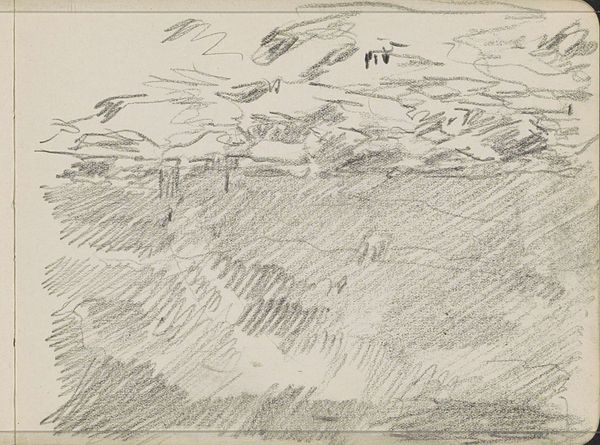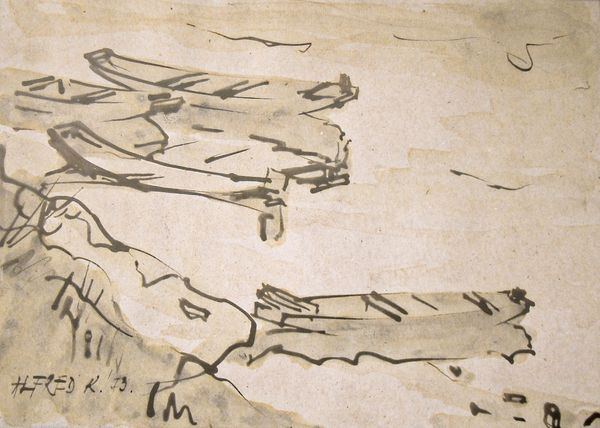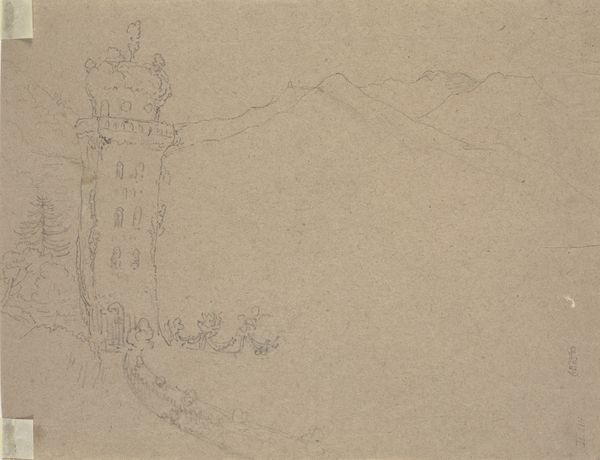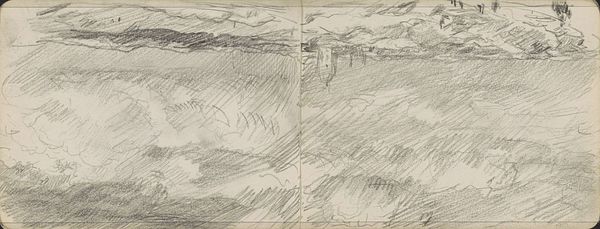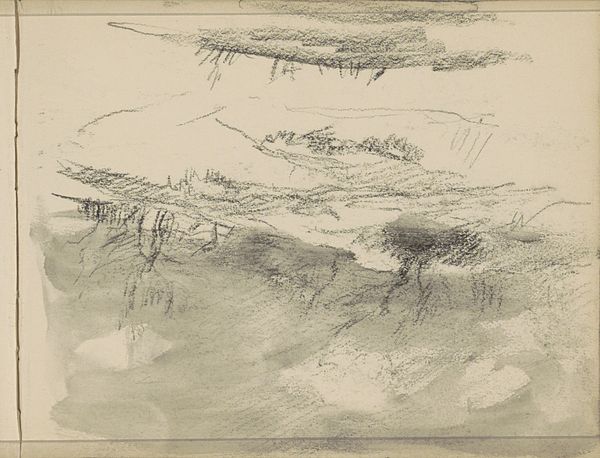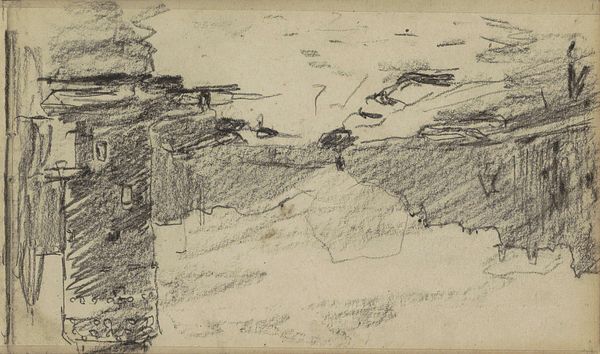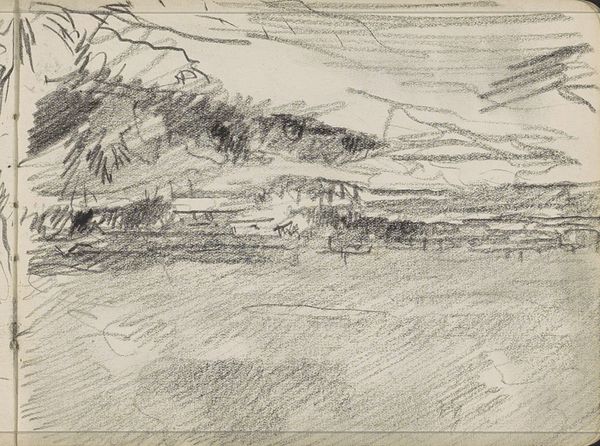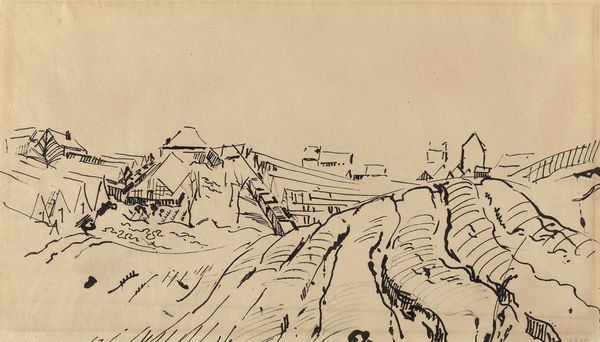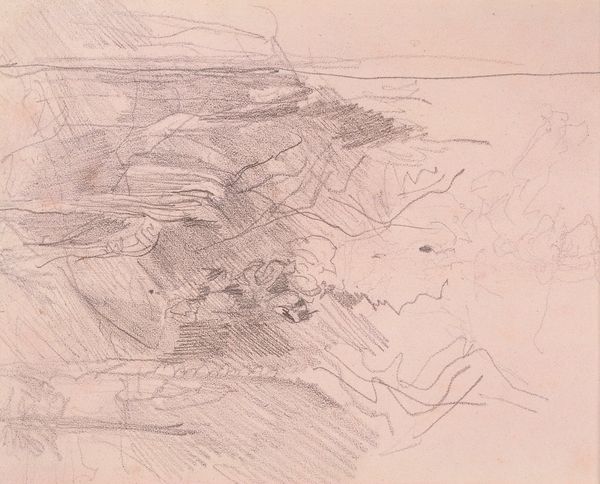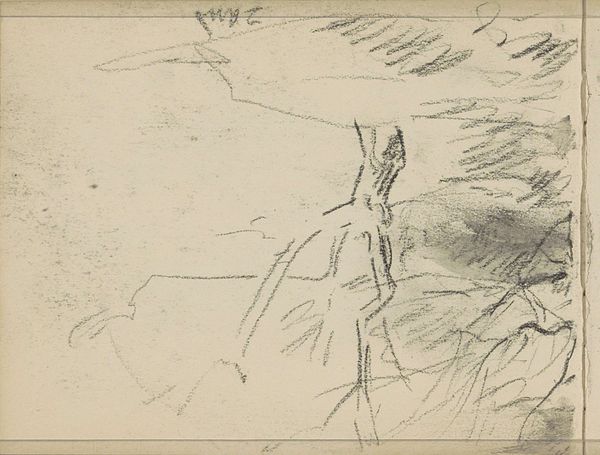
drawing, pencil
#
drawing
#
light pencil work
#
quirky sketch
#
sketch book
#
landscape
#
personal sketchbook
#
sketchwork
#
detailed observational sketch
#
sketch
#
pencil
#
line
#
sketchbook drawing
#
storyboard and sketchbook work
#
sketchbook art
#
realism
#
initial sketch
Dimensions: 21 x 17 cm
Copyright: Public domain
Editor: Here we have Sedrak Arakelyan’s "Sevan," a pencil drawing from 1925. There’s a kind of stark beauty in this simple sketch of a landscape. What catches your eye in this piece? Curator: What intrigues me is how Arakelyan captures the geological character of the Sevan region. The quick lines suggest a place shaped by time and tectonic activity. But thinking historically, this sketch comes from a period of intense cultural nationalism in Soviet Armenia. Does this landscape perhaps represent an attempt to solidify a sense of place and identity after tremendous upheaval? Editor: So you’re saying it’s more than just a landscape; it's tied to nation-building? Curator: Exactly. Artists were often tasked, sometimes overtly, sometimes subtly, with visually defining and celebrating their homelands. We might ask: what aspects of this landscape are emphasized and what’s omitted? How does the artist present a specifically Armenian landscape to both a local and potentially international audience? Editor: It’s interesting you mention the audience, because if this were simply from a personal sketchbook, the purpose could have been different. Curator: Precisely. It is really important to reflect if this was for the public or just personal reference. The image has power regardless but the original audience really changes my view. Editor: I hadn’t thought about the link between art and political identity in that period so directly, but it gives the work a much deeper resonance. Curator: Indeed. This quick sketch is now making us ponder its historical and cultural purpose and context.
Comments
No comments
Be the first to comment and join the conversation on the ultimate creative platform.
